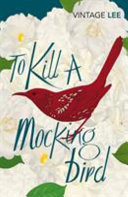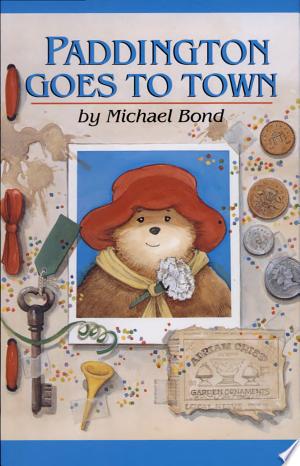Estimated read time: 6 min read
One Sentence Summary
A young girl navigates the complexities of race, justice, and compassion in a small Southern town during the Great Depression.
Table of Contents
Introduction
"To Kill a Mockingbird" is a classic American novel written by Harper Lee and published in 1960. Set in the fictional town of Maycomb, Alabama, during the 1930s, the novel explores themes of racial inequality, social injustice, and the loss of innocence. Through the eyes of Scout Finch, the young protagonist, the story unfolds as she navigates through the complex world of prejudice and injustice. With its powerful storytelling and thought-provoking themes, "To Kill a Mockingbird" has become a beloved literary masterpiece that continues to resonate with readers of all ages.
Brief Synopsis
The story of "To Kill a Mockingbird" revolves around Scout Finch, a young girl growing up in the racially divided town of Maycomb. Scout lives with her older brother Jem and their widowed father, Atticus Finch, who is a respected lawyer. The novel begins by introducing the reader to the quirky and close-knit community of Maycomb, with its small-town dynamics and deeply ingrained racial prejudice.
As Scout and Jem embark on their journey of discovery, they become fascinated by their reclusive neighbor, Arthur "Boo" Radley. Boo is the subject of many rumors and gossip, and the children's curiosity leads them to try and make contact with him. However, their attempts to befriend Boo are met with resistance from the adults in their community, who view him as an outcast.
Meanwhile, Atticus takes on the challenging task of defending Tom Robinson, a black man falsely accused of raping a white woman. Despite overwhelming evidence of Tom's innocence, the deeply ingrained racism of the townspeople makes it nearly impossible for Atticus to secure a fair trial. As the trial progresses, Scout, Jem, and their friend Dill witness the injustice and prejudice that permeate the courtroom.
The climax of the novel occurs during the trial, where Atticus delivers a powerful defense for Tom Robinson, exposing the flaws in the prosecution's case. However, despite Atticus's efforts, the jury returns a guilty verdict, reflecting the prevailing racism of the era. Devastated by the outcome, Scout and Jem struggle to make sense of the injustice they have witnessed.
Setting
"To Kill a Mockingbird" is set in the fictional town of Maycomb, Alabama, during the 1930s. Maycomb is a small, close-knit community that is deeply divided along racial lines. The town is characterized by its southern charm, with its oak trees, dusty streets, and hot summers. The setting plays a significant role in the story, as the racial tensions and social dynamics of Maycomb shape the events and relationships within the novel.
Main Characters
| Character | Description |
|---|---|
| Scout Finch | The young protagonist and narrator of the story. Scout is an intelligent and curious girl who grows up throughout the novel, gaining a deeper understanding of the world around her. Her innocence and unique perspective provide insight into the themes of the story. |
| Jem Finch | Scout's older brother, Jem, is a thoughtful and protective character. He undergoes his own coming-of-age journey and grapples with the injustices he witnesses. |
| Atticus Finch | Scout and Jem's father, Atticus, is a compassionate and morally upright lawyer. He represents the moral compass of the novel, fighting for justice and equality in the face of deep-rooted prejudice. |
| Boo Radley | A reclusive neighbor who becomes the object of fascination for Scout, Jem, and their friend Dill. Boo's mysterious nature adds an element of suspense to the story and challenges the children's preconceived notions about others. |
| Tom Robinson | A black man falsely accused of raping a white woman. Tom's trial serves as the central conflict of the novel and highlights the racial inequality and injustice prevalent in Maycomb. |
Themes and Insights
Racial Inequality and Prejudice
One of the central themes of "To Kill a Mockingbird" is the exploration of racial inequality and prejudice. The novel portrays the deep-seated racism of the 1930s American South, where black individuals were marginalized and denied basic rights. Through the lens of Scout's innocence, Harper Lee exposes the irrationality and cruelty of racial prejudice. The trial of Tom Robinson serves as a stark example of the injustice faced by African Americans during this time period.
Loss of Innocence
Another significant theme in the novel is the loss of innocence. As Scout and Jem navigate the complexities of their town and witness the harsh realities of racism, their childhood innocence is gradually shattered. They are forced to confront the hypocrisy and cruelty of the adult world, realizing that justice and fairness are not always upheld. This loss of innocence is a poignant reminder of the harsh realities of life and the challenges of growing up in an unjust society.
Social Injustice
"To Kill a Mockingbird" also explores the broader theme of social injustice. Beyond racial inequality, the novel delves into the prejudices and biases that permeate society as a whole. Harper Lee shines a light on the unfairness and inequality faced by marginalized groups, highlighting the need for empathy, understanding, and the pursuit of justice.
Reader's Takeaway
"To Kill a Mockingbird" is a powerful and thought-provoking novel that tackles important themes of racial inequality, prejudice, and the loss of innocence. Through the eyes of the young protagonist, Scout Finch, readers are transported to the turbulent world of Maycomb, Alabama, during the 1930s. The novel serves as a reminder of the enduring impact of prejudice and injustice, while also emphasizing the importance of compassion, understanding, and the pursuit of justice.
Conclusion
"To Kill a Mockingbird" is a literary masterpiece that has captivated readers for decades. Harper Lee's poignant storytelling and exploration of themes such as racial inequality, loss of innocence, and social injustice make the novel a timeless classic. Through its memorable characters and vivid setting, "To Kill a Mockingbird" continues to resonate with readers, challenging them to confront the complexities of the human experience and strive for a more just and empathetic society.
To Kill a Mockingbird FAQ
What is 'To Kill a Mockingbird' about?
To Kill a Mockingbird is a novel by Harper Lee set in the fictional town of Maycomb, Alabama, during the Great Depression. It explores themes of racism, injustice, and the loss of innocence through the eyes of a young girl named Scout Finch.
Who is the author of 'To Kill a Mockingbird'?
The author of 'To Kill a Mockingbird' is Harper Lee.
When was 'To Kill a Mockingbird' published?
'To Kill a Mockingbird' was published on July 11, 1960.
Is 'To Kill a Mockingbird' a true story?
No, 'To Kill a Mockingbird' is a work of fiction.
What are some major themes in 'To Kill a Mockingbird'?
Some major themes in 'To Kill a Mockingbird' include racism, morality, social inequality, loss of innocence, and the power of empathy.
Who are the main characters in 'To Kill a Mockingbird'?
The main characters in 'To Kill a Mockingbird' are Scout Finch, Atticus Finch, Jem Finch, Boo Radley, and Tom Robinson.
What is the significance of the title 'To Kill a Mockingbird'?
The title 'To Kill a Mockingbird' is a metaphor that represents the destruction of innocence or the act of harming something pure and harmless. It symbolizes the unjust harm done to the characters in the novel.
Has 'To Kill a Mockingbird' won any awards?
Yes, 'To Kill a Mockingbird' won the Pulitzer Prize for Fiction in 1961.
Is 'To Kill a Mockingbird' suitable for young readers?
While 'To Kill a Mockingbird' is often taught in schools, parents may want to consider the themes and subject matter before recommending it to younger readers.
Are there any film adaptations of 'To Kill a Mockingbird'?
Yes, 'To Kill a Mockingbird' was adapted into a film in 1962, directed by Robert Mulligan and starring Gregory Peck as Atticus Finch.





